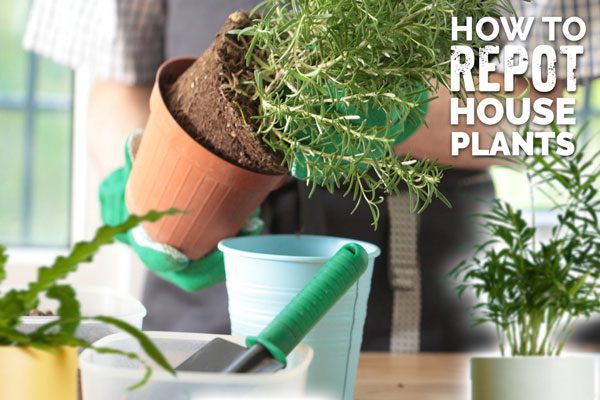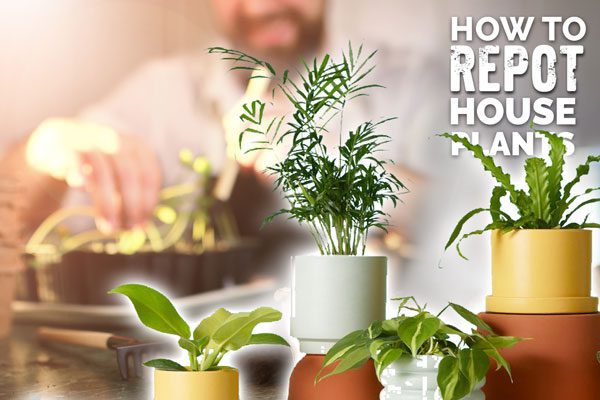Houseplants require occasional repotting to keep them healthy. Here’s a quick crash course on how to do it efficiently so that your plant goes on to flourish.
When To Repot
Can you see exposed roots at the top or bottom of the pot? That’s a good sign it’s time to upgrade the plant’s home. Wilting is another indication that it’s time for repotting.

If unsure, tip the plant out and check the root system. Plenty of white healthy roots and soil means you’re ok for now; if not, then its time to repot!
Types Of Pots
Use either plastic or clay pots. The pot should have drainage holes so excess water can escape and save the roots from rot.
Soak clay pots 24 hours before use, so they don’t draw the water out of the compost.
Pots come in all shapes and sizes, but you can generally stick to the most common formats (2″-10″).

How To Repot
- Water the plant the day before repotting so that it is well hydrated.
- Move up by only one pot size, or your plant will form new roots to fill that wide-open space. Bigger is not always better!
- Use a saucer slightly bigger than your pot to catch any drained water.
- Keep things tidy by using landscape fabric in the bottom of the pot to cover the drainage holes. The material allows water through but stops compost from escaping.
- Add a fine layer of gardening gravel to the bottom of the pot to improve drainage.
- Fill the new pot about half full with fresh compost.
- Use the pot that your plant is currently in and press it lightly into the new container, creating a footprint (like an inverted sandcastle) for your plant to fit in. This trick minimizes root disturbance and eases transplant.
- Sprinkle the new pot with mycorrhizae powder, an organic plant stimulant that improves the plant’s growth and health.
- Put your hand over the top of the soil with the main stem between your fingers for support. Turn the pot upside down.
- Tap the pot’s rim on a firm surface to loosen it and allow the root ball to slip out. Tease the roots free as gently as possible.
- Place the root ball into the new pot and gently push the surrounding compost around it.
- Top up with fresh compost. Don’t compact it down as this will squash out essential oxygen and hinder root growth.
- Leave space between the rim of the pot and the surface of the compost for watering. Increase this space with the size of the container. Larger plants require more water.
- If your houseplants are too large to be repotted any further, redress the compost by removing the top 1 to 1 1/2 inches of old compost and replace it with new organic matter.
Happy repotting!
Good